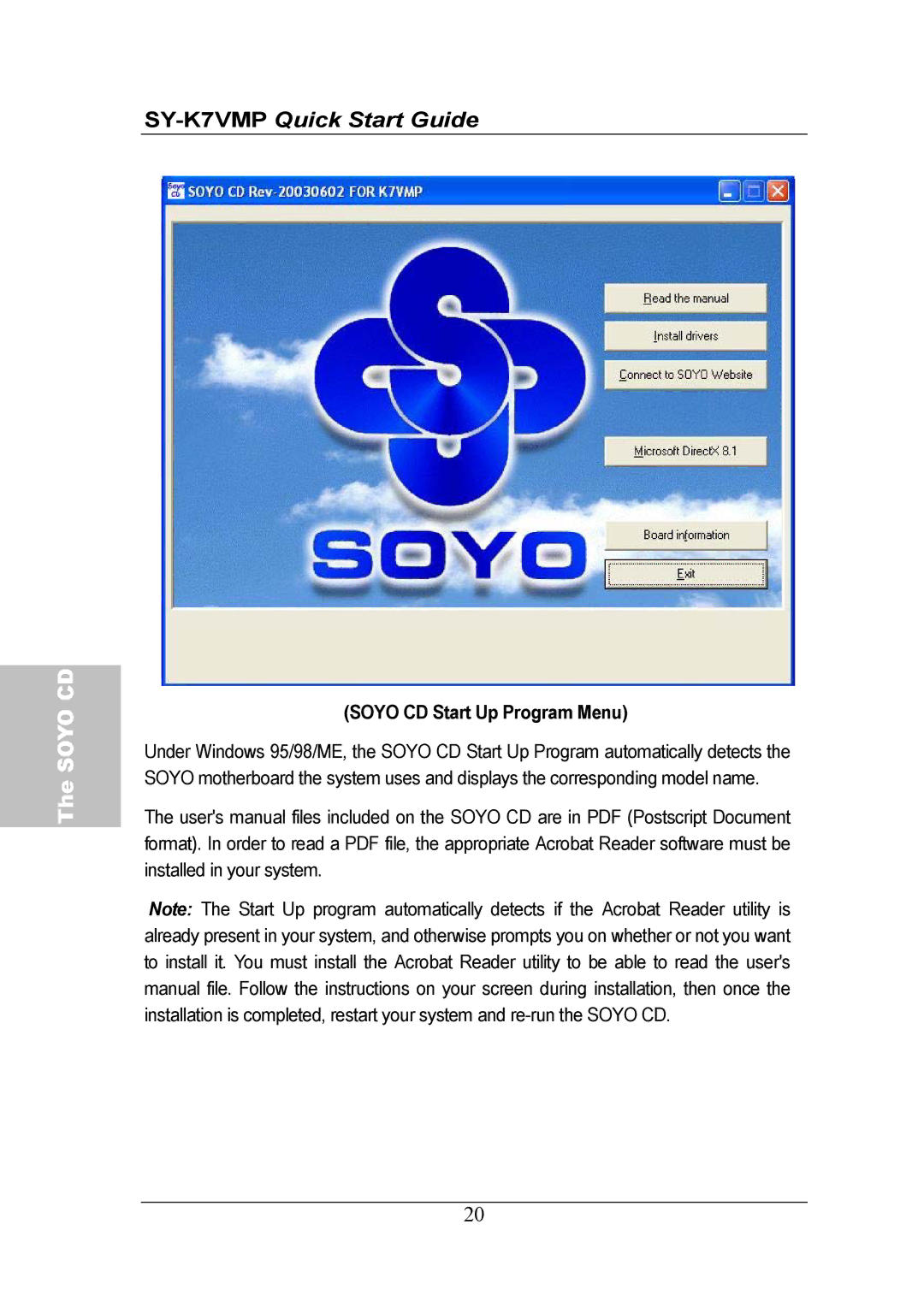SY-K7VMP specifications
The SOYO SY-K7VMP motherboard is a classic piece of hardware from the early 2000s that gained attention for its advanced features and compatibility with the AMD Athlon and Duron processors. Designed for users looking for robust performance and reliability, the SY-K7VMP offered several technologies and characteristics that made it a popular choice among computer builders at the time.One of the primary features of the SY-K7VMP is its support for the AMD Socket A, accommodating processors with a front-side bus (FSB) speed of up to 200 MHz, enabling users to harness the full potential of their CPUs. With a chipset based on the VIA KT133A, the SY-K7VMP provided a balanced approach to performance and stability, making it suitable for both home and office environments.
The motherboard supported up to 1GB of SDRAM through its three DIMM slots, allowing users to enhance multitasking capabilities and improve overall system responsiveness. The SY-K7VMP supported various RAM speeds ranging from PC-100 to PC-133, providing flexibility for users to select the memory that best suited their performance needs.
In terms of storage options, the SY-K7VMP featured an integrated IDE controller that supported up to four ATA/100 devices, which allowed for faster data transfer rates and improved hard drive performance. This was crucial at a time when data storage demands were rapidly increasing with the introduction of larger hard drives.
Another highlight of the motherboards was its integrated AC'97 audio, which eliminated the need for a separate sound card for basic audio needs. This feature catered to casual users who needed standard audio capabilities without additional costs. Furthermore, the SY-K7VMP was equipped with multiple expansion slots, including AGP and PCI slots, enabling users to add graphics cards, additional sound cards, or network cards as needed.
The SY-K7VMP also placed an emphasis on connectivity, featuring onboard LAN support for internet access, which was becoming increasingly essential for users. Overall, the SOYO SY-K7VMP motherboard offered a compelling combination of features, performance, and expandability.
While it may be considered outdated by modern standards, the SY-K7VMP remains a testament to the evolution of computing hardware and the demands of users during its time in the spotlight.

